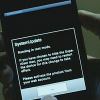Flaw Found In Encrypted Email Programs
This flaw is more on semantics, than on the mathematics or the protocol side of cryptography. Nevertheless, it is an important note to be taken seriously. Normal men on the street who do not know about the semantics in which encryption works will still be deceived by another person should he choose to exploit this semantic flaw.
By Dennis Fisher, eWEEK
There is a fundamental flaw in numerous popular encrypted e-mail
programs that calls into question the authenticity of digitally signed
and encrypted e-mail messages, according to a security researcher
who has published a paper on the subject.
But, as is usually the case in the security community, the revelation has
sparked a debate over the merits of the disclosure.
The problem lies in the way that secure mail programs handle digital
signatures and encryption. Because encrypted mail messages are
necessarily stamped with a digital signature before they are encrypted,
the recipient can only be sure who wrote the message and not who
encrypted it, according to Don Davis, corporate security architect at
Curl Corp., in Cambridge, Mass., and the author of the paper.
For example, if a salesman sends his confidential customer list to a
co-worker via encrypted e-mail, the recipient could decrypt the
message using his private key, re-encrypt it using a competitor's
public key and then send it off to the competitor. The message would
then appear to have been sent by the original author.
However, this method would only work if the original message did not
contain a salutation, such as "Dear Bill." In his paper, Davis proposes
several fixes for the problem, including signing the recipient's name
into the plaintext before encryption; encrypting the sender's name
into the plaintext; or signing again the already signed and encrypted
message. Also, as Davis acknowledges, this is a known problem. He
maintains, however, that the widespread adoption of PKI and
encrypted e-mail have greatly increased the scope of the issue.
"All of these secure mail programs were written a different stage in
the Internet's history, when it was assumed that users would be
sophisticated enough to know what information to put in the
message body and the header," Davis said. "Users now aren't
qualified to make that judgment."
Davis posted his paper to the Bugtraq security mailing list on
Saturday, touching off a heated debate about whether the problem is
actually in the cryptography employed by programs such as Pretty
Good Privacy and Privacy Enhanced Mail or in the protocol with
which they are implemented. The argument is simply one of semantics,
Davis contends, and does not change the core thesis of his paper.
But others feel that the flaw is just one more in an unending string of
such discoveries.
"This is something that should be fixed, but would I recall PGP in
order to fix it? No," said Bruce Schneier, noted cryptographer and
chief technology officer at Counterpane Internet Security Inc. in
Cupertino, Calif. "There's a feeling that these security products are
magic, but that's not true. Every piece of security software has these
problems. You find one, and there are still a hundred others out
there."







































































